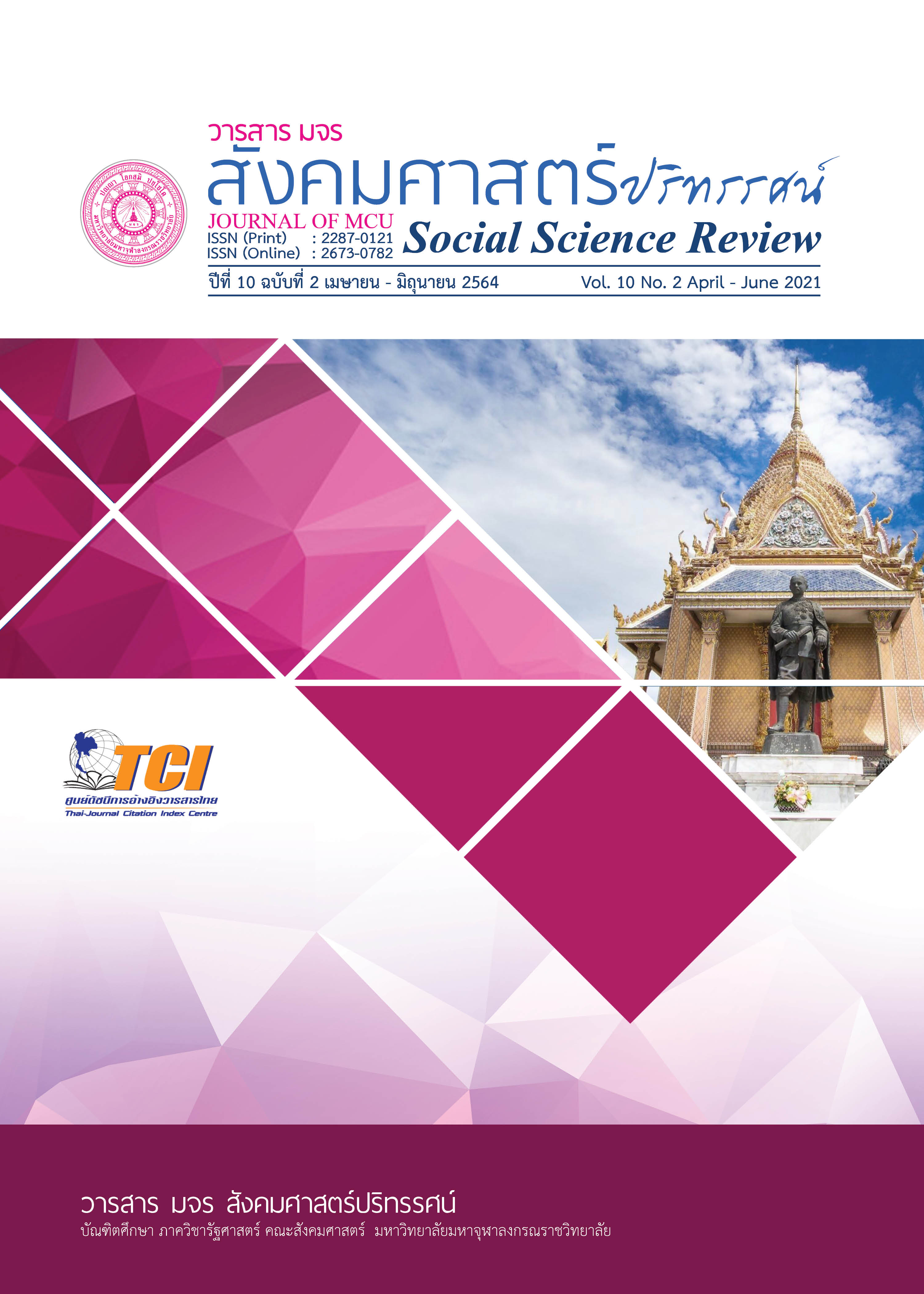พัฒนาการและโครงสร้างเงินสะสมขององค์กรปกครองส่วนท้องถิ่นภายใต้ ระเบียบกระทรวงมหาดไทยว่าด้วยการรับเงิน การเบิกจ่ายเงิน การฝากเงิน การเก็บรักษาเงิน และการตรวจเงินขององค์กรปกครองส่วนท้องถิ่น ฉบับปี พ.ศ. 2547 จนถึงปี พ.ศ. 2562
คำสำคัญ:
เงินสะสม, วินัยการคลัง, องค์กรปกครองส่วนท้องถิ่นบทคัดย่อ
บทความนี้มีวัตถุประสงค์เพื่อ 1) ศึกษาพัฒนาการระเบียบและมาตรการการใช้จ่ายเงินสะสมของ อปท. ตั้งแต่ปี พ.ศ. 2547 – 2562 2) วิเคราะห์เปรียบเทียบโครงสร้างเงินสะสมของ อปท. ภายใต้ระเบียบกระทรวงมหาดไทยฯ พ.ศ. 2547 กับระเบียบกระทรวงมหาดไทยฯ พ.ศ. 2561 3) จัดทำข้อเสนอแนะการปรับปรุงแก้ไขระเบียบและมาตรการการใช้จ่ายเงินสะสมของ อปท. ที่มีความคล่องตัว มีประสิทธิภาพ และรักษาปริมาณเงินสะสมในระดับที่เหมาะสม โดยใช้ระเบียบวิธีวิจัยเชิงคุณภาพจากการวิเคราะห์ตีความกฎหมาย ระเบียบ คำสั่ง หนังสือสั่งการ หนังสือซักซ้อมความเข้าใจ และงานวิจัยที่เกี่ยวข้อง
ผลการศึกษาพบว่า 1) พัฒนาการระเบียบการใช้จ่ายเงินสะสมของ อปท. แบ่งออกได้ 2 ระยะ คือ ระยะที่หนึ่ง การใช้ระเบียบกระทรวงมหาดไทยฯ พ.ศ. 2547 - 2560 ซึ่งไม่ประสบความสำเร็จ และระยะที่สอง การใช้ระเบียบกระทรวงมหาดไทยฯ พ.ศ. 2561 ยังไม่เป็นไปตามเป้าหมายที่คาดไว้ 2) วิเคราะห์เปรียบเทียบโครงสร้างเงินสะสมของ อปท. พบว่า โครงสร้างเงินสะสมมีความซ้ำซ้อน การใช้จ่ายไม่คล่องตัว อันสืบเนื่องจากเจตนารมณ์ที่มุ่งเน้นการรักษาวินัยการคลังและการตรวจสอบที่เข้มงวด 3) จัดทำข้อเสนอแนะการปรับปรุงแก้ไขระเบียบการใช้จ่ายเงินสะสมของ อปท. ภาครัฐควรปรับโครงสร้างเงินสะสมให้เป็นเอกภาพ กำหนดเพดานทุนสำรองเงินสะสม และออกมาตรการส่งเสริมการใช้จ่ายเงินสะสมของ อปท. ภายใต้หลักการบริหารงานคลังสาธารณะที่มุ่งเน้นผลสัมฤทธิ์
เอกสารอ้างอิง
กรมบัญชีกลาง. (2563). รายงานการเงินรวมภาครัฐ ประจำปีงบประมาณ พ.ศ. 2562. กรุงเทพฯ: กรมบัญชีกลาง กระทรวงการคลัง.
กรมส่งเสริมการปกครองท้องถิ่น. (2564). แนวทางการใช้จ่ายเงินสะสมขององค์กรปกครองส่วนท้องถิ่นเพื่อสนับสนุนนโยบายของรัฐบาลในการสร้างความเข้มแข็งให้แก่องค์กรปกครองส่วนท้องถิ่น. สืบค้น สืบค้น 9 มีนาคม 2564, จาก http://www.dla.go.th/upload/callcenter/type1/2018/1/64240_1.pdf
พระราชบัญญัติกำหนดแผนและขั้นตอนการกระจายอำนาจให้แก่องค์กรปกครองส่วนท้องถิ่น พ.ศ. 2542. (17 พฤศจิกายน 2542). ราชกิจจานุเบกษา. เล่ม 116 ตอนที่ 114 ก. หน้า 48.
ระเบียบกระทรวงมหาดไทยว่าด้วยการรับเงิน การเบิกจ่ายเงิน การฝากเงิน การเก็บรักษาเงิน และการตรวจเงินขององค์กรปกครองส่วนท้องถิ่น (ฉบับที่ 4) พ.ศ. 2561. (18 ธันวาคม 2561). ราชกิจจานุเบกษา. เล่ม 135 ตอนพิเศษ 323 ง. หน้า 1.
วีระศักดิ์ เครือเทพ (2562). บทวิเคราะห์และแนวทางจัดการเงินสะสมขององค์กรปกครองส่วนท้องถิ่น: กรณีศึกษาจังหวัดนนทบุรี. วารสารสังคมศาสตร์ มหาวิทยาลัยนเรศวร, 15 (1), 191-215.
สมาคมพนักงานเทศบาลแห่งประเทศไทย. (2559). ตำนานว่าด้วยเงินสะสมท้องถิ่น. สืบค้น 20 มีนาคม 2564, จาก https://www.gotoknow.org/posts/603195
สำนักงานคณะกรรมการมาตรฐานการบริหารงานบุคคลส่วนท้องถิ่น. (2564). ระเบียบกระทรวงมหาดไทยว่าด้วยการรับเงิน การเบิกจ่ายเงิน การฝากเงิน การเก็บรักษาเงิน และการตรวจเงินขององค์กรปกครองส่วนท้องถิ่น พ.ศ. 2547. สืบค้น 9 มีนาคม 2564, จาก http://www.local.moi.go.th/law027.pdf
Sobel, R. S. & Holcombe, R. G. (1996). The Impact of State Rainy Day Funds in Easing State Fiscal Crises During the 1990 - 1991 Recession. Public Budgeting and Finance, 16(1), 28-48.
ดาวน์โหลด
เผยแพร่แล้ว
รูปแบบการอ้างอิง
ฉบับ
ประเภทบทความ
สัญญาอนุญาต
ลิขสิทธิ์ (c) 2021 วารสาร มจร สังคมศาสตร์ปริทรรศน์

อนุญาตภายใต้เงื่อนไข Creative Commons Attribution-NonCommercial-NoDerivatives 4.0 International License.
เพื่อให้เป็นไปตามกฎหมายลิขสิทธิ์ ผู้นิพนธ์ทุกท่านต้องลงลายมือชื่อในแบบฟอร์มใบมอบลิขสิทธิ์บทความให้แก่วารสารฯ พร้อมกับบทความต้นฉบับที่ได้แก้ไขครั้งสุดท้าย นอกจากนี้ ผู้นิพนธ์ทุกท่านต้องยืนยันว่าบทความต้นฉบับที่ส่งมาตีพิมพ์นั้น ได้ส่งมาตีพิมพ์เฉพาะในวารสาร มจร สังคมศาสตร์ปริทรรศน์ เพียงแห่งเดียวเท่านั้น หากมีการใช้ภาพหรือตารางหรือเนื้อหาอื่นๆ ของผู้นิพนธ์อื่นที่ปรากฏในสิ่งตีพิมพ์อื่นมาแล้ว ผู้นิพนธ์ต้องขออนุญาตเจ้าของลิขสิทธิ์ก่อน พร้อมทั้งแสดงหนังสือที่ได้รับการยินยอมต่อบรรณาธิการ ก่อนที่บทความจะได้รับการตีพิมพ์ หากไม่เป็นไปตามข้อกำหนดเบื้องต้น ทางวารสารจะถอดบทความของท่านออกโดยไม่มีข้อยกเว้นใดๆ ทั้งสิ้น





